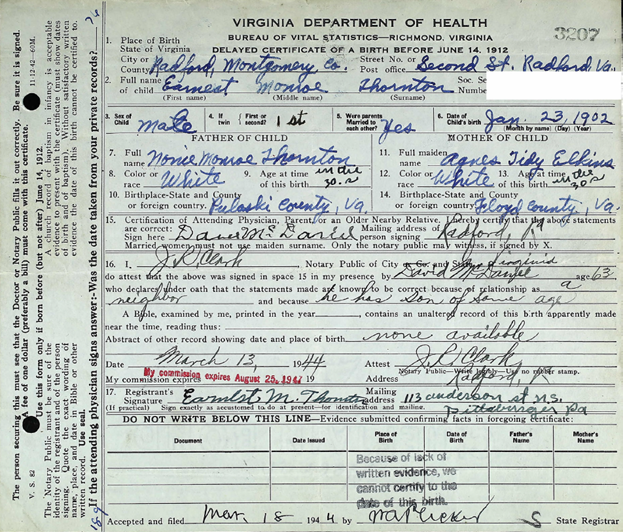Birth Certificates
In September 1942, the American women’s magazine Good Housekeeping published an article “Why you need a birth certificate.”
“America has suddenly become aware of birth certificates,” it declared. Between 1940 and 1943, as the United States shifted into a wartime industrial economy, many native-born Americans faced difficulty proving that they were, in fact, citizens by birth.
In the early 1940s, about 43 million Americans—nearly one-third of working-age population—had no such document. Their births had never been recorded by government, and they faced complex and unfamiliar procedures for documenting their own births. This process was known as “delayed birth registration;” people sent forms and supporting evidence to the offices of vital statistics in their birth states, then waited for weeks or months to get an answer. (source)
In March 1944, my grandfather Ernest Monroe Thornton traveled over 300 miles from Pittsburgh, PA to Radford, Virginia where he was born to apply for his birth certificate. But with both his parents and grand parents dead, apparently no one in the family had a bible or other evidence of his birth. He even went with his brother who applied at the same time. What he received was an uncertified document “because of lack of written evidence.” This may have affected his ability to get a job.


Leave a Reply